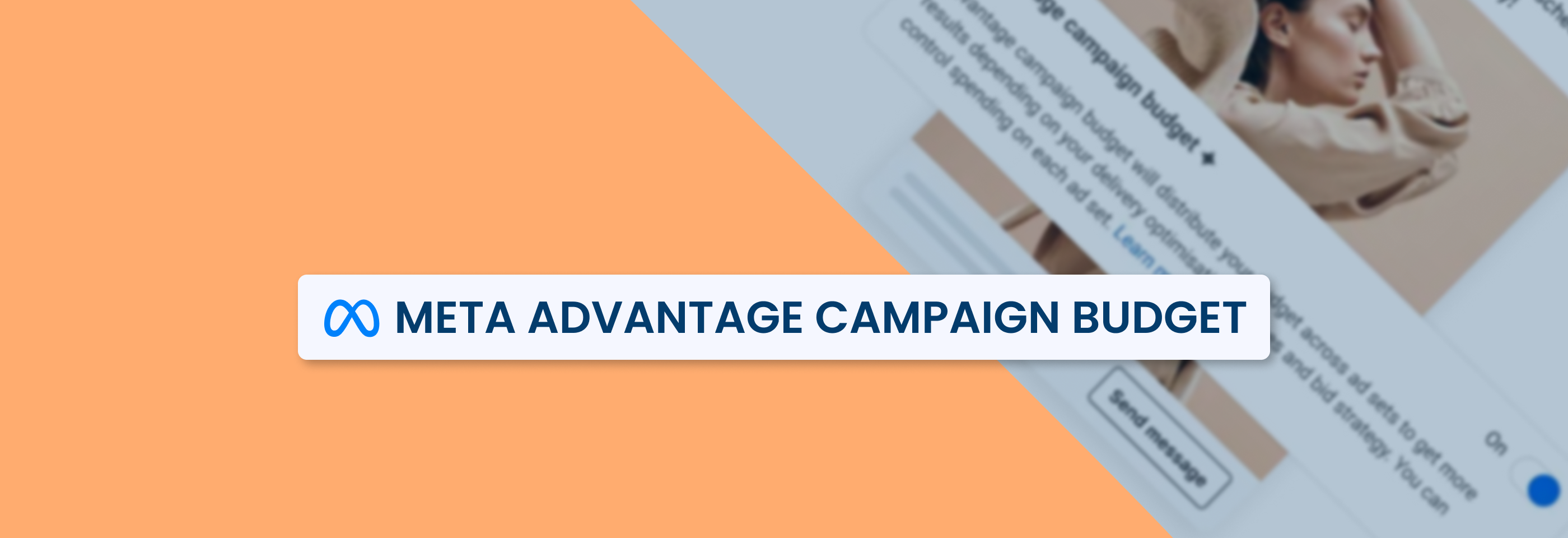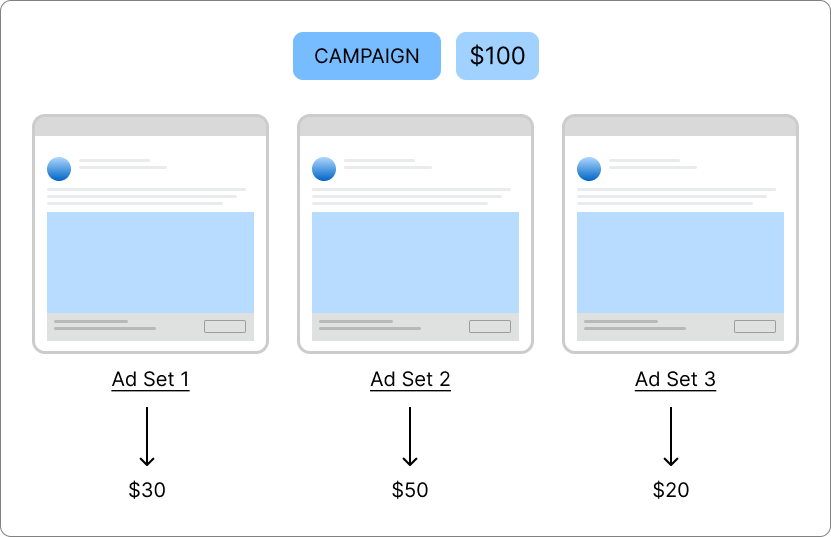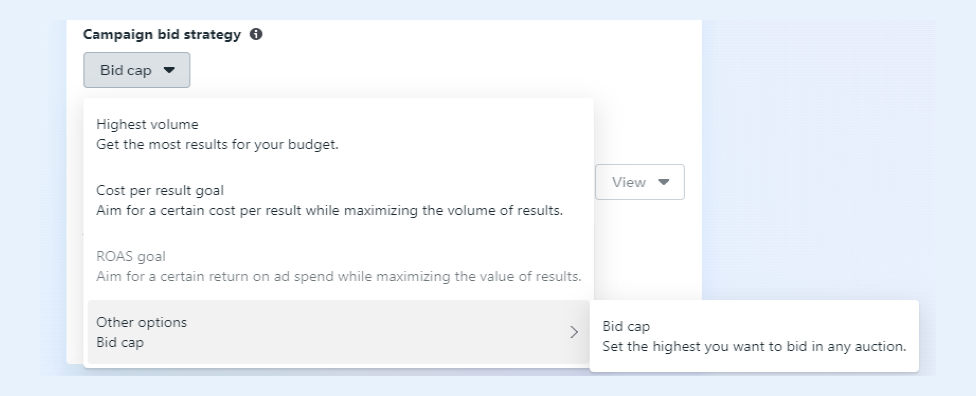Advantage Campaign Budget Explained: How to Optimize Your Meta Ads
2024-10-05

Managing budgets for your Facebook or Meta ads can be tricky, especially when running multiple ad sets. But what if there was a way to let Meta handle the heavy lifting for you?
Enter CBO (Campaign Budget Optimization), now called Advantage Campaign Budget – a native automation tool that allocates your budget based on ad performance.
In this article, we’ll explore how Advantage Campaign Budget works, when to use it, and key tips to get the most out of it. If you’re ready to optimize your ads without all the manual effort, keep reading.
What Is Meta Advantage Campaign Budget?
Originally called Campaign Budget Optimization, CBO was a Facebook’s feature that allows you to optimize your budget spending with the help of AI algorithms.
A while ago, Meta rebranded it as Advantage Campaign Budget, but it’s essentially the same as the old CBO with no changes in how it works. As Meta continues to push for AI-powered automation with its Meta Advantage+ tools, this renaming makes a lot of sense.
How does Advantage Campaign Budget work?
To put it simply, with CBO or the Advantage Campaign Budget, you set a single campaign budget. Then, Meta’s algorithms will distribute across multiple ad sets based on their performance.
So, rather than manually setting individual budgets for each ad set, Meta will automatically shift most of your campaign’s budget towards ad sets that deliver the best results. This can potentially help you achieve lower cost per action (CPA) and maximize overall ad performance.
You can use Advantage Campaign Budget on a daily basis (by using daily budget) or across the entire campaign duration (by using lifetime budget). With a lifetime budget, you can run your ads on a set schedule, and Meta will optimize your spending even if different ad sets start at different dates.
 When you're setting up your Advantage campaign budget, you can choose between daily and lifetime budgets, as well select a specific bid strategy.
When you're setting up your Advantage campaign budget, you can choose between daily and lifetime budgets, as well select a specific bid strategy.
Here’s another thing to keep in mind: Meta won’t necessarily split your budget evenly between ad sets. For example, if you have two ad sets running, Meta might spend the majority of the budget on one of them if it looks more promising in terms of ad performance. What this means is that basically, you need to focus on the overall campaign performance when analyzing your results.
Let’s take a look at a specific example for a better understanding.

Imagine that you’re running a campaign with three ad sets, and you’ve set a $100 daily budget with an Advantage Campaign Budget feature. In this case, the budget distribution might look like this:
- Ad Set №1 gets $30 daily,
- Ad Set №2 gets $50,
- Ad Set №3 gets $20.
Ad Set №2 has proven to be more effective than others in achieving your goals, which is why it receives more spending. This flexibility allows Meta to maximize your campaign performance and reduce the need for manual adjustments, all at the same time.
CBO, or Advantage campaign budget has other benefits as well, so let’s talk about them.
Benefits of Advantage Campaign Budget
1. Work less, automate more
Advantage campaign budget takes care of budget allocation automatically, so you don’t have to constantly check ad performance and adjust the budget for each ad set.
Essentially, you save time, avoid mistakes, and get an opportunity to focus on other parts of your campaign instead of worrying about budgets all day. This is especially useful if you’re managing lots of campaigns or clients.
2. Optimize budgets in real time
Advantage campaign budget continuously adjusts how much is spent on each ad set based on their performance. If one ad set is doing well, it’ll get more of the budget, while the ones that aren’t performing as well will get less.
This happens all day, every day, ensuring your money is always spent where it gets the best results. If you’re advertising in a very competitive industry, A/B testing different ad creatives, or operating with a high ad spend, this feature can help you make sure your budget is being used as effectively as possible.
3. Lower your Cost Per Action (CPA)
By automatically moving your budget to the best-performing ad sets, Advantage campaign budget helps lower your Cost Per Action (CPA) and other cost-related metrics.
A lower CPA also means more conversions or sales for your budget, helping you get the most out of your ad spend. If you’re working with a tight budget or want to achieve a higher ROAS, this feature might be just right for you.
4. A/B test faster and more effectively
Advantage campaign budget, or CBO, makes testing different ads or audiences easier and faster. It quickly identifies which ad sets are performing best and shifts the budget toward them, speeding up the testing process and helping you find what works faster.
Faster A/B testing means quicker optimization and scaling – you don’t have to spend a lot of time to achieve the best results possible.
5. Scale your ad campaigns easier
When you’re ready to scale up your campaigns, Advantage campaign budget makes it easier by automatically allocating more budget to the best-performing ad sets.
You won’t have to micromanage every budget increase or think which ad set is worthy of extra money in the ad spend: Meta algorithms will decide it for you. And you don’t even have to worry if an ad set you scaled stops delivering good results – the budget will be allocated to better candidates.
6. Simplify campaign management
Managing multiple ad sets can get complicated, but Advantage campaign budget simplifies things by quite a lot. You don’t have to constantly tweak budgets for each ad set, which makes your campaigns easier to handle.
If you’re running complex campaigns, Advantage campaign budget will reduce the management hassle and lets you focus on big-picture strategy.
7. Reduce audience overlap
Advantage campaign budget also helps prevent audience overlap, or the situation when multiple ad sets target the same people. By managing the budget at the campaign level, CBO ensures your ad sets aren’t competing against each other, which could increase your advertising costs.
Less overlap means lower costs and better results because your ads aren’t fighting for the same audience’s attention.
All of that sounds great in theory, but does the Advantage campaign budget work well for everyone? Let’s answer this question and go through the cases most suited for using this feature.
When should you use Advantage Campaign Budget?
Here’s a breakdown of scenarios when Advantage Campaign Budget works best:
1. You want to automate your ad spend
If you’re running campaigns with multiple ad sets and don’t want to spend a lot of time manually adjusting budgets, the Advantage campaign budget is your go-to tool. It automates the process, allocates more budget to the ad sets that are performing well, and cuts back on those that aren’t.
2. You have multiple ad sets
Advantage campaign budget performs the best when you have several ad sets with different audiences (note that this doesn’t include their sizes) or creatives. Instead of guessing how much budget each ad set should get, Meta will dynamically adjust the budget based on which ad sets are delivering the best results.
It’s especially useful for campaigns that target multiple audience segments (like different age groups or locations) but have a shared goal, e.g. conversions.
3. You want to scale your campaign
If you’re ready to scale a successful campaign, Advantage campaign budget can help. As you increase your overall budget, Meta automatically directs more more money to the best-performing ad sets, making scaling a lot more easier and smoother.
You won’t have to think which ad sets to spend more money on – Meta will figure it out for you and adjust spending if anything changes in ad performance.
4. Your objective is sales or leads
Advantage campaign budget works especially well for conversion-based campaigns. If you’re running a leads or sales campaign, Meta’s algorithm will shift the budget towards the ad sets that are delivering those results most efficiently. This can help lower your CPA and maximize your return on ad spend (ROAS).
5. You want simpler campaign management
If you’re running a complex campaign that you regularly change (by rotating ad creatives, for example), using Advantage campaign budget can simplify the management process. Instead of manually tweaking each ad set budget, Meta will manage the budget for the entire campaign, and you’ll have more time to focus on other elements like ad creatives or audience segmentation.
But you might also be wondering whether to use Advantage Campaign Budget (CBO) or stick with Ad set budgets.
The main difference comes down to how much control you want over your spending. With Advantage campaign bugdet, you set one budget for the whole campaign, and Meta automatically shifts more money to the ad sets that are doing the best. It’s an easier, hands-off option, especially if you have multiple ad sets with different audiences or creatives.
With ad set budgets, you decide exactly how much money each ad set gets. This gives you more control, but it means you’ll need to spend more time watching and adjusting everything. This is more useful when you’re A/B testing or running traffic or brand awareness campaigns.

For example, when you’re just starting out with a new campaign, you can adopt this easy framework:
- Use Ad set budgets for testing: keep full control over your budget and help each audience and creative get its fair share of budget.
- Use Advantage campaign budget for scaling: once you know which audiences and creatives perform well, switch to CBO. Your budget will automatically move to the best-performing ad sets, making scaling easier.
Based on everything we’ve mentioned, the Advantage campaign budget won’t be the right fit for you in these instances:
- You need control over your ad budgets: if you want to manage exactly how much is spent on each ad set, using ad set budgets will give you more control.
- You have smaller/niche campaigns: if you have only one ad set or a very small, focused audience, Advantage campaign budget may not be necessary – manual budget control could work better here.
- Your goal is traffic or awareness: in some cases, CBO won’t perform as well for objectives like traffic or awareness, where manual testing and adjustments are often more effective.
In short, an Advantage campaign budget can be a good fit for most advertisers, especially if you have multiple ad sets with similar goals. But if you need more control, it’s better to stick to ad set budgets.
If you’ve decided that Advantage Campaign Budget is the right option for you, your campaign should meet these criteria:
Uniform budget type across ad sets
All ad sets in your campaign must use the same budget type, either daily or lifetime: you can’t mix these budget types within a single campaign. This consistency allows Meta to optimize the budget without restrictions.
Consistent bid strategy
Every ad set in your campaign must follow the same bid strategy. Whether you choose Highest Volume, Cost per Result Goal, or ROAS Goal, the same strategy should be applied across all ad sets.
Same optimization event for highest volume
If you’re using the Highest Volume bid strategy (formerly known as Lowest Cost), all ad sets need to optimize for the same event: conversions, clicks, or engagements. This allows Meta to focus the budget on driving the most results for the goal you chose.
Standard delivery for all ad sets
All ad sets must also use standard delivery: you can’t mix different delivery types within a campaign using the Advantage campaign budget. Standard delivery helps the algorithm distribute the budget effectively.
At least 2 ad sets
Your campaign should have at least two ad sets. Advantage Campaign Budget works by shifting the budget between ad sets based on performance, so having just one ad set defeats the purpose of using CBO.
No more than 200 ad sets
Your campaign can include up to 200 ad sets while using Advantage Campaign Budget. This limit allows the tool to work across even large campaigns, optimizing budget distribution effectively.
Finally, we have to talk about how you can make the most out of the Advantage campaign budget.
Best practices for Advantage Campaign Budget optimization
To get the best results from your campaigns with an enabled Advantage campaign budget, you need to follow these key best practices:
1. Limit the number of ad sets
While the upper limit for the number of ad sets you can have in your campaign eligible for CBO is 200, Meta recommends keeping this number lower. Ideally, you shouldn’t exceed 70 ad sets per campaign.
More ad sets can limit the edits you can make after publishing and prolong the learning phase. Fewer ad sets, on the other hand, reduce your risk of audience fragmentation and auction overlap.
Instead of creating multiple ad sets for each audience, you can try using Meta’s audience expansion feature to reach more people without splitting your budget too thin. You’ll see the recommendation to expand your audience at the Ad set level if Meta thinks this will deliver better results.
But if you’re targeting different countries or product groups, you might have to create and run multiple ad sets. In these situations, Advantage campaign budget can still distribute your budget effectively, so it may be worth trying out.
2. Target audiences of similar sizes
If you need to use multiple ad sets, make sure that the audience sizes are similar. Why? Because larger audiences tend to receive more budget, which can leave ad sets with smaller audiences underfunded.
Balancing your audience sizes will help Meta distribute the budget more evenly, which means that all of your ad sets get a chance at showing you if they’re worth more investments.
3. Choose the right bid strategy
When you enable Advantage campaign budget, the default bid strategy will be Highest Volume (similar to the old Lowest Cost strategy). It works by getting you the most results within your budget.

However, depending on your goals, you can also explore these bid strategies:
- Cost per Result Goal, which allows you to control how much you’re willing to pay for a specific result.
- ROAS Goal, which helps you achieve a specific return on ad spend.
Selecting the right bid strategy depends on your campaign objectives, but Highest Volume seems to be the most preferred option of many advertisers.
4. Trust Meta’s algorithms, but monitor ad performance
As we’ve said earlier, one of the strengths of the Advantage campaign budget feature is that Meta’s algorithms automatically optimize your budget in real-time.
But just like with any type of automation, you have to monitor ad performance regularly to avoid potential issues or unpleasant surprises. Our guide to common Facebook ad statuses will help you understand what’s happening to your campaigns.
To keep your budget in check, you can use Facebook automated rules to adjust bids or get alerts when an ad set’s performance changes. While Meta manages the budget, these rules give you extra control without needing to monitor everything yourself.
Keep in mind that Meta advises analyzing results at the campaign level instead of focusing too much on individual ad sets. Looking at the total number of optimization events and the average cost per result will give you a better sense of overall performance.
Also, it’s important not to manually pause and unpause ad sets — this can disrupt the process. Pausing an ad set can lead to the remaining ad sets consuming the budget, leaving little to spend when the paused ad set is reactivated.
5. Avoid too many ad set spend limits
Ad set spend limits can restrict Meta’s ability to optimize your budget effectively, so use these limits sparingly or avoid them altogether. This will give the algorithms more flexibility in distributing your budget where it’s most effective.

If you want to stay within certain limits when it comes to how much you spend on each ad set, it may be better to use ad set budgets instead.
6. Add ad sets in bulk and minimize changes
Whenever you need to add new ad sets to a live campaign that uses Advantage campaign budget, it’s best to do so in bulk.
This helps reduce the time your campaign spends in the learning phase – the shorter it is, the faster Meta's algorithms will start to work properly. If you need to adjust campaign settings, make multiple changes at once as well.
7. Don’t pause low-delivering ad sets too quickly
If some ad sets aren’t delivering as expected, don’t rush to pause them: pausing a low-delivery ad set prematurely could cause you to miss future chances.
Instead of immediately pausing, check why the ad set isn’t delivering and try to troubleshoot the issue. Pausing too quickly can also increase the cost per action (CPA) for your active ad sets, and you definitely want to avoid doing it without a good reason.
Recap
Meta's Advantage campaign budget is a useful tool for automating budget allocation, optimizing results, and scaling your Facebook ad campaigns.
Whether you're testing ads or looking to simplify budget management, this feature can help you allocate your budget where it matters most. For most advertisers, it's a hands-off, efficient solution, but you have to remember to monitor your results and make adjustments to achieve what you want.

